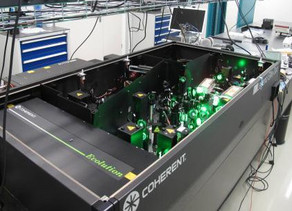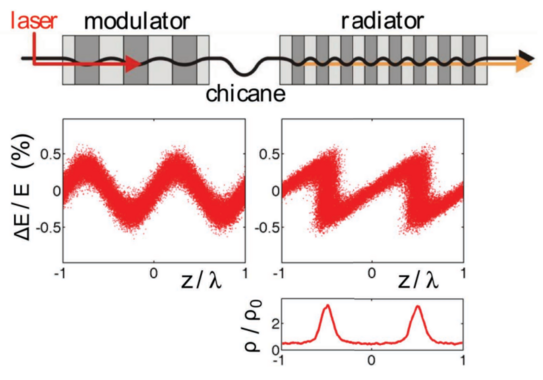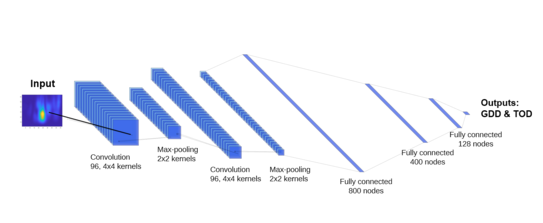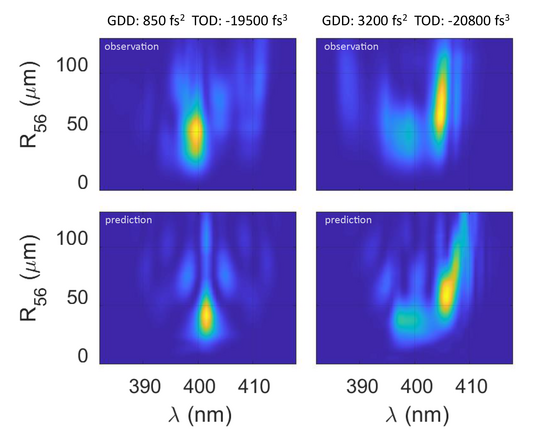CHG spectra analysis
Atomic transition processes usually occur on very short time scales. To temporally resolve these processes, very short light pulses are generated at the synchrotron radiation source DELTA using a technique so-called Coherent Harmonic Generation (CHG). For this purpose, a pulsed laser beam is overlapped with the stored electron beam in a specialized magnet (undulator) to modulate the electron energies (modulator). As the modulated electrons pass through a magnetic chicane, the energy modulation is converted into a density modulation, so that CHG radiation is emitted from a subsequent second undulator, which acts as a radiator (see picture top right). The CHG method provides ultrashort (sub-picosecond), coherent light pulses with wavelengths extending into the vacuum-ultraviolet range (VUV). The spectral characteristics of this radiation depend, among others, on the adjustment parameters of the "seeding" laser beam and the chicane strength. Further information can be found in the project descriptions and publications of the research groups (see: Khan, Helml).
For the NN-based analysis of CHG radiation spectra, they were first simulated for laser pulses with different spectral phases and different strengths of the magnetic chicane (R56). In particular, the influence of two laser pulse parameters, group delay dispersion (GDD) and third-order dispersion (TOD), on the spectra was primarily investigated. To predict the GDD and TOD values from the measured CHG spectra, a convolutional neural network (CNN) was developed (see second figure above) and then trained with a data set of over 40000 numerically simulated spectra for different combinations of GDD and TOD values. Subsequently, the trained surrogate models were capable of predicting the GDD and TOD values of the laser pulse for different pulse properties, from the measured spectra (see left image). Further details can be found in the conference contribution for the IPAC-2023.




![[Translate to English:] [Translate to English:]](/storages/delta/_processed_/1/2/csm_studium_seitenheader_1e3d243ce2.jpg)


